Dragons and Power: The Origin and Evolution of the Dragon Motif in Chinese Art History 飛龍在天 萬乘之尊:龍紋在中國藝術史中的起源與演變
English 英 & Chinese 中: Amelia Zhu 朱欣然
Senior Asian Art Specialist, Business Development, Waddington’s Auctioneers and Appraisers
沃丁頓拍賣亞洲藝術部資深專家/商務拓展
Photography Provided by Waddington's Auctioneers and Appraisers
As featured in 2024 Fête Chinoise Design Annual
For millennia, representations of dragons have been deeply ingrained in Chinese art across a variety of media. The dragon’s various depictions highlight its pivotal role as a representation of the divine, a symbol of imperial authority, and a dynamic force capable of warding off malevolent influences. Through its role as a benevolent deity, it’s believed to bring auspicious events, such as rainfall, and to foster life on earth.
The 2024 Lunar New Year marked the arrival of the Year of the Dragon, the only year named after a fantastical creature, and the most celebrated creature of the twelve zodiac animals. As a tribute to this tradition, the Royal Ontario Museum exhibits a set of twelve porcelain zodiac animals in the Joey and Toby Tanenbaum Gallery of China, rotating it every Lunar New Year to showcase the present year’s zodiac animal front and centre.
Today, the dragon is commonly understood to be a blend of various features: stag antlers, an equine head, rabbit’s eyes, a serpent’s body, fish scales, eagle talons, and other superfluous features. However, during ancient times, dragons were entirely creations of imagination, and traditions varied as to the dragon’s attributes. Different interpretations’ features ranged from the bodies of lizards, crocodiles, and serpents to the heads of horses, cows, or pigs.
千百年來,中國藝術中對龍的呈現形式多不勝數。 無盡關於龍的描繪凸顯了龍作為神權、皇權的象徵,通天徹地,驅邪攘災,納祥轉運,護佑蒼生,成為中華民族的精神圖騰。
2024年的農曆新年標誌着龍年的到來,作為十二生肖中唯一在現實世界中沒有被發現的生物,龍也因此被視為最特殊、最受歡迎的生肖之一。 為了紀念生肖文化的傳統,加拿大皇家安大略博物館在主樓第一層,中國藝術(約瑟夫和托比·塔南鮑姆)展廳展出了一套三彩瓷塑十二生肖,每年農曆新年都會展出該年的生肖動物,置於最中心位置,供遊客觀賞。
One of the earliest discovered representations of a dragon in China dates to the 5th to 3rd millennium BC, from the Hongshan culture, in the form of a celadon nephrite jade “C-shaped dragon” carving. This dragon bears a long, protruding snout that terminates in a truncated and upturned manner, with paired protruding eyes, resembling a pig’s head. Held in the Palace Museum Collection, Beijing, it once belonged to the collection of Professor Fu Zhongmo, a celebrated academic in the field of Chinese jade.
Following the transition to the Shang dynasty (1600–1100 BC), both the spiritual authorities and the royal authorities held significant importance. Jade artifacts of earlier neolithic cultures, such as the aforementioned Hongshan culture, were used for sacrificial rituals and reverence to deities, thus the neolithic period is commonly referred to as the “jade age of gods.”
現今龍的形象普遍被認為是人們將若干動物肢體和特徵組合成的神物,如鹿角、馬首、兔眼、蛇身、 蜃腹、魚鱗、鷹爪等。 然而在古代,龍完全是古人豐富想像的產物,人們對其形象屬性的看法各不相同,對它的描繪更接近於類似蜥蜴、鱷魚和蛇的身體,以及馬、牛或豬的頭部。 中國發現得最早的龍的形態之一可以追溯到公元前5至3世紀的紅山文化,這條青黃玉龍整體形狀呈C字型,龍首長鼻突出,末端短而上翹,梭形長眼狹長聳出,酷似野豬,頸部有類似背鬃的形狀並向捲起,尾部較鈍,全身光素無紋。 此玉龍現藏於北京故宮博物院,原為古玉研究專家傅忠謨先生收藏。
By contrast, the Shang period is referred to as the “jade age of kings,” as jade artifacts were predominantly used for adornment and decoration by the royal family. As a result, wearing jade artifacts with dragon motifs was a clear indication of the wearer’s status and authority. Such artifacts were undoubtedly owned and enjoyed solely by individuals within the inner circle of the ruling class, and so represent the highest level of development in jade craftsmanship and production during the Shang dynasty.
The jades from this period also reflect the mainstream aesthetics and cultural attributes of that era. One such Shang dynasty depiction of dragons can be found in a jade carving that sold at Waddington’s Auctioneers and Appraisers in Toronto on December 7th, 2023, previously from the collection of Albert Y.P. Lee (Li Erbai) and Sara K.S. Lee (Luo Guisheng), descendants of the famous Chinese statesman Li Hongzhang (1823–1901). This piece is a vivid and intriguing image: Its small size and a drilled aperture at the tail both point toward its use as an ornament, signifying its role as an object of enjoyment for royal nobility.
商代(公元前1600-1100年),是神權與王權並重並連結緊密的時期。 早期的新石器時代,如前文提到的紅山文化,對玉器的使用限於祭祀儀式和神靈崇拜。 新石器時代通常被稱為「神玉時代」。 而商代則轉變為「王玉時代」,所生產玉器大多為王室佩戴、把玩裝飾使用。 因而能夠佩戴帶有龍紋飾的玉器更是成為了王室特權和身份地位的象徵。 此類玉器製品無疑專供統治階級內部階級享有,代表了商代玉器製作的工藝和生產能力的最高水平,同時反映了當時的主流美學和文化。 具體可參考沃丁頓拍賣2023年12月7日售出的一件商代青白玉龍佩,該藏品屬於十九世紀中國著名政治家李鴻章(1823-1901年)家族後代李爾白及夫人駱桂生伉儷重要青銅器及玉器珍藏。 玉龍形態寫實、生動有趣。 小巧的尺寸和尾部的鑽孔都顯示其作為佩飾的功能,以及其專供王公貴族享受的珍貴身份。
Prior to the Qin dynasty (221–206 BC), the dragon held significance as an object of reverence, associated with state leaders and ancestors, and its imagery was not tied to any particular individual. However, during the Qin dynasty, the portrayal of the dragon became standardized, reflecting the centralized governance of the nation and serving as one of the many tools used by the emperor to justify his rule. Qin Shi Huang (259–210 BC), the first emperor of China, adopted titles such as “the Emperor of the Dragon Throne” and “Master of the Waters.”
Later rulers and nobility continued to exploit the dragon’s dual symbolism as a representation of both ancestral and military power. One notable example is Liu Bang (256–195 BC), later known as Emperor Gaozu and the first emperor of the Han dynasty (206 BC–AD 8), who claimed to have been conceived after his mother encountered a dragon during a rainstorm. In following this philosophy, subsequent emperors referred to themselves as the “Heavenly Son of the Dragon” and adorned imperial chambers, garments, tombs, and even everyday imperial objects with dragon motifs.
It was only during the Song dynasty (960–1279) that the dragon became associated exclusively with the emperor, as decreed by Emperor Huizong (1082–1135), who imposed a penalty of two years’ imprisonment for offenders. As a result, depictions of the dragon during this period would have been directly commissioned by the imperial court.
秦朝(公元前221-206年)之前,龍作為通天神獸,其形象與王權和先祖聯繫在一起,並不代表任何獨立個體,直到秦始皇(公元前259-210年) 統一中國。 作為中國的第一位皇帝,秦始皇將龍的形象確立,並以「祖龍」自居。 此舉不僅反映了國家的集權統治,並成為皇帝用來鞏固皇權、證明其統治合法性的眾多工具之一。 秦之後的歷代君主都繼續利用龍的雙重象徵意義來實現對絕對權利的掌控。 相傳漢朝的第一位皇帝,高祖劉邦(西元前256-195年)其母親在暴雨中遇龍後懷孕,誕下劉邦,因此他被稱為「真龍天子」。 隨後的歷代帝王紛紛效仿,並在宮廷、服飾、陵墓及皇家日常用品上飾以龍紋,彰顯權力和神聖地位。
The record for the highest value achieved at auction by a Chinese work of art depicting a dragon is held by a painting by the Southern Song court painter Chen Rong (1200–1266); entitled “Six Dragons,” it sold for $48,967,500 USD. Chen Rong was celebrated for his paintings of dragons, and this particular work was deaccessioned from the Fujita Museum, Osaka. A meticulous lineage of documentation traces the painting back to the collection of Emperor Qianlong (1711–1799) later in the Qing dynasty. Most importantly, it was documented in the Shiqu Baoji, a prestigious inventory that catalogued Chinese paintings and calligraphic pieces within the imperial Qing collection. Just as Chen Rong’s dragon was favoured by dignitaries at the time of its creation, his depictions set the standard for dragon imagery in the centuries that followed.
直到宋朝(960-1279年)期間,龍才成為皇權的專屬代表。 宋徽宗(1082-1135年)曾頒布法令規定龍紋僅為皇家尊用,違者判以兩年監禁。 因此,帶有龍紋裝飾的物品非常有可能由宮廷直接管轄製作。 迄今,中國「龍」藝術品最高拍賣紀錄由南宋宮廷畫家陳容(1200-1266年)所作《六龍圖》以售價48,967,500美元的驚人記錄所保持。 陳容,字所翁,以畫龍而聞名,筆墨簡潔而精妙,故世有「所翁龍」之稱。 此幅《六龍圖》為日本藤田美術館舊藏,流傳有序,品相完好。
最重要的傳承是其曾為清代乾隆皇帝(1711-1799年)珍藏,並收錄在專門記載清代內府收藏的歷代書法和繪畫的專書《石渠寶笈》中。 乾隆皇帝更提筆在畫作中央留下行書詩一首以表達喜愛之情。 陳容「所翁龍」的高超藝術水準為後世龍形象的發展奠定了基礎。
The Yuan dynasty (1279–1368) saw further regulations on the use of dragon symbolism, reserving the depiction of five-clawed dragons solely for the emperor, while princes were permitted to use four-clawed dragons. Unlike earlier depictions, Yuan dragons were ferocious and mighty, full of free and vivacious charm, and were closely related to the spirited rule of the Mongol-led Yuan dynasty.
Emperor Shizu (1215-1294), also known as Kublai Khan, established the Bureau of Gold and Jade in Hangzhou and Dadu (modern-day Beijing), which oversaw thousands of skilled jade artisans. These jade production centres were tightly regulated in order to supply jade exclusively for imperial use. The decoration, carving techniques, and craftsmanship during this period were remarkably exquisite and showcased a distinct style unique to the Yuan dynasty. Such artifacts inherited a lineage of carving styles and techniques from the jade artwork of the Song, Liao, and Jin dynasties. Many pieces took the form of double-layered open-work design on panels or belt ornaments.
到了元朝(1279-1368年),統治者對龍紋的使用進行了進一步的規範化,設定「五爪龍」僅為皇帝專用,皇子則可使用「四爪龍」。 與早期的描繪不同,元代的龍形象兇猛而強大,充滿動感與張力,或許與彼時蒙古族群驍勇善戰和血氣方剛的形象相符。 元始祖忽必烈(1215-1294年)在杭州設立了官辦金玉總管府,直接管轄南方數千名玉雕工匠,使北方的大都(今北京)與南方的杭州成為元代南北玉器生產製作中心。 這些官方管理的玉器生產機構管理嚴格,專門為皇室提供宮廷用玉。 這時期的裝飾、雕刻技術和工藝精美絕倫,展現了元代獨特的風格。 上承宋、遼、金玉器雕刻風格和技術,元代玉雕造型古樸但卻工藝精湛,許多牌佩類及帶飾採用透雕、浮雕、雙層鏤空設計。 罕見的元代白玉高浮透雕穿花龍紋蹀躞為例,溫潤堅密的白玉厚料深刀立體地雕琢出一條五爪龍,蜿蜒穿行於紛繁翻卷、枝梗交錯中,層次豐富,立體感極強。 這時期的玉器展示了北方民族對玉雕工藝的創新、不惜工本的氣度,這是強大的政治力量和繁榮的經濟的果實,並奠定了隨後明清時期玉雕藝術發展的基礎。
One such example, sold at Waddington’s Toronto in September 2023, depicted a five-clawed dragon carved reticulated on a white jade belt plaque. Jade pieces from this period demonstrated the innovative and sumptuous spirit of these northern ethnic groups toward jade-crafting culture, which was a consequence of the strong political might and prosperous economy. This tradition laid the groundwork for the evolution of jade carving in the Ming and Qing dynasties that followed.
Continuing into the Ming dynasty (1368–1644), five-clawed dragons remained strictly reserved for imperial use. The emperor employed the dragon to embody various aspects of his personality and reign, reinforcing his divine connection to the celestial realm. Dragons with a lesser number of claws were subsequently not assigned to the emperor himself, but were still associated with the imperial court. For example, a silk embroidered textile depicting a four-clawed dragon was likely used for an altar table, possibly for a personal shrine or dedicated room used for religious purposes within a household. Such altar fronts were often presented as gifts from the court to noble families or offered as tributes to temples patronized by the court. In contrast, a yellow-ground silk robe embroidered with a five-clawed dragon from the Beijing Palace Museum would have been worn by the emperor himself.
明朝時期(1368-1644)繼承了元代政權規定的關於龍的形制的嚴格要求。 皇帝將龍用來強化其「天子」的神聖及絕權威身分以鞏固統治。 「五爪龍」仍被嚴格規定為帝王專用,爪數較少的龍依然只能為皇族宗親所用,其他王公大臣一律不准篡奪。 一張緂絲滿金地「雲龍戲珠」紋桌圍中央描繪了一條正臉四爪龍,騰空凌駕於海水江崖之上,祥雲之中。 這張緹絲刺繡得到作用可能為供桌桌帷,或用於小型祠堂等。 此類供桌裝飾物,或常作為禮物被皇帝贈予皇親國戚使用,或用於皇室供奉的寺廟中。 相較之下,北京故宮博物院所藏的一件明黃色雲龍緞補灑線繡百花攆龍紋袍料則為皇帝本人所穿龍袍專用料。
Even stricter and more complex systems were adopted following the Manchu-led Qing Dynasty (1644–1911), such as those imposed on ceramics. For example, porcelain wares brandishing yellow glazes and patterns of dragons were reserved exclusively for use by the royal family. The emperor was the sole user of dragon-patterned porcelain decorated entirely in yellow. The emperor, empress dowager, and empress used ceramics that were sumptuously glazed with yellow both inside and out. By contrast, imperial noble consorts, who were second to the empress, used ceramics with yellow glaze on the exterior but with white glaze on the interior. Further down the hierarchy, the imperial concubines used porcelain of yellow ground decorated with green dragons, then regular concubines used blue-ground porcelain with yellow dragons. The following rank used green-ground porcelain with purple dragons, and even further down the hierarchy, concubines used green-ground porcelain with red dragons.
Another strictly regulated system of imperial articles was the imperial dress code. The colour “Minghuang,” or bright yellow, was reserved for the emperor and empress dowager, the empress, and first-rank consorts during formal occasions. One example from the Royal Ontario Museum Collection is a bright yellow-ground, semi-formal twelve-symbol dragon robe (jifu). This garment was worn by the emperor during significant festivals, banquets, and ritual performances. The jifu robe held a status second only to a robe worn during formal ceremonial occasions.“Jinhuang” (golden yellow), “Xinghuang” (apricot yellow), “Xiangse” (yellow with a greenish tinge), and “Qiuxiangse” (brown/plum) were worn by imperial family members of varying levels. Lower-ranking nobles wore blue-ground robes.
滿族統治下的清朝(1644-1911年)採取了更嚴格和複雜的制度。 例如依據官窯瓷器製度規定,釉面為黃色且帶有龍紋的瓷器只供皇室專用。 內外黃釉龍紋器為皇帝所用;皇帝、皇太后、皇后用裡外黃釉器;貴妃用外黃內白器;貴妃用黃地綠龍器;嬪妃用藍地黃龍器;貴人用綠地紫龍器;常在用綠地紅龍器。 一件清康熙時期(1662-1722年)貴妃所用黃地鬥彩雲龍戲珠紋盤,於2023年6月售於加拿大沃丁頓拍賣。
清朝的宮廷服飾制度,比歷代各朝都更為嚴謹複雜,規定詳細且繁瑣,階級分明。 皇帝、貴族乃至朝臣的服飾穿戴都有明顯的差別,以示尊卑。 乾隆皇帝於1748年頒布全面製定朝祭服裝配件的敕令,歷時十年,於1759年編纂成《欽定皇朝禮器圖式》。 其中規定明黃色為皇帝所用,以及皇太后、皇后和正一品妃子在正式場合穿著才可使用。 現藏於加拿大皇家安大略博物館的一件明黃地十二章吉服,便為皇帝在重大吉慶節日、筵宴以及祭祀主體活動的前後階段所穿服飾。 吉服在禮制功能上等級規格僅次於禮服。
As for the depictions themselves, the five-clawed dragons referred to as “long” were used exclusively for the robes and badges of the emperor. The next tier were five-clawed dragons called “mang,” and these were assigned to the emperor’s sons, first-rank princes and their sons, and second-rank princes. The four-clawed “mang” dragons were assigned to the emperor’s grandsons, great-grandsons, and great-great-grandsons, as well as princes from the third down to the seventh rank. Although eighth- and ninth-rank nobles (along with court officials) did not wear dragon badges, their robes were still decorated with five-clawed “mang” dragons.
One notable example of a dragon robe depicts a five-clawed dragon embroidered with gold thread, which is created by kneading and rolling gold leaf into thin strips, then intertwining the gold with silk thread to create a malleable and weavable material. This technique was developed as a way to emphasize luxury and beauty, showcasing the wearer’s prestige and status. Its purple ground is certainly a unique colour reserved for kinsmen of the emperor.
另皇族親宗可戴金黃,杏黃,香色,秋香色;石青(藍)色則為較低等級服飾。
就龍的表現形式而言,五爪龍紋只用於皇帝所穿的袍服和紋章。 五爪蟒紋與龍紋在外觀上相似,只是名稱有所不同,用於皇子、親王、親王世子和郡王服飾中。 四爪蟒紋則用於皇孫、皇曾孫、皇太孫以及三品親王至七品侯伯。 儘管八等和九等貴族以及朝廷官員不戴龍徽,但他們的袍服仍裝飾有五爪「蟒」龍。
一件「五爪金龍袍」,身上九條龍及錦地均以金線刺繡而成。「盤金繡」技法是將金塊錘打成金箔,將金箔裁成細條,包裹絲線捻搓,再將金線釘於絲線上繡成龍紋而成。 其工藝精美繁複、不惜工本,重點在於展現富麗耀眼的美感與氣勢,紫地更凸顯穿著者的尊貴身分。
From ancient times, respect and reverence for dragons have been evident across various domains of literature, art, and architecture. Over thousands of years of Chinese history, depictions of dragons have transformed from their initial origin as symbols used in rituals and worship into symbols of wealth and authority. In tandem with China’s unification and rise, dragons’ symbolism became inseparable from imperial authority and the aspirations of the ruling elite.
Today, the dragon has become a core attribute of Chinese civilization — an embodiment of people’s hopes and aspirations for a better future that nevertheless upholds their traditional cultural heritage.
自古以來,人們對龍的尊崇在文學、藝術和建築等領域都有所體現。 龍的描繪在中國數千年歷史中不停演變,隨着中國的統一和崛起,龍的象徵意義從最初作為神權的代表,逐漸成為王權地位及財富的象徵。如今,龍依然是中華文明的象徵之一,寄託了人們對美好生活的嚮往與祈願。
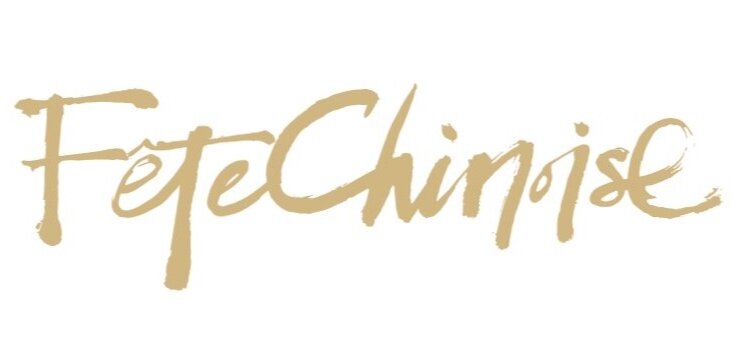


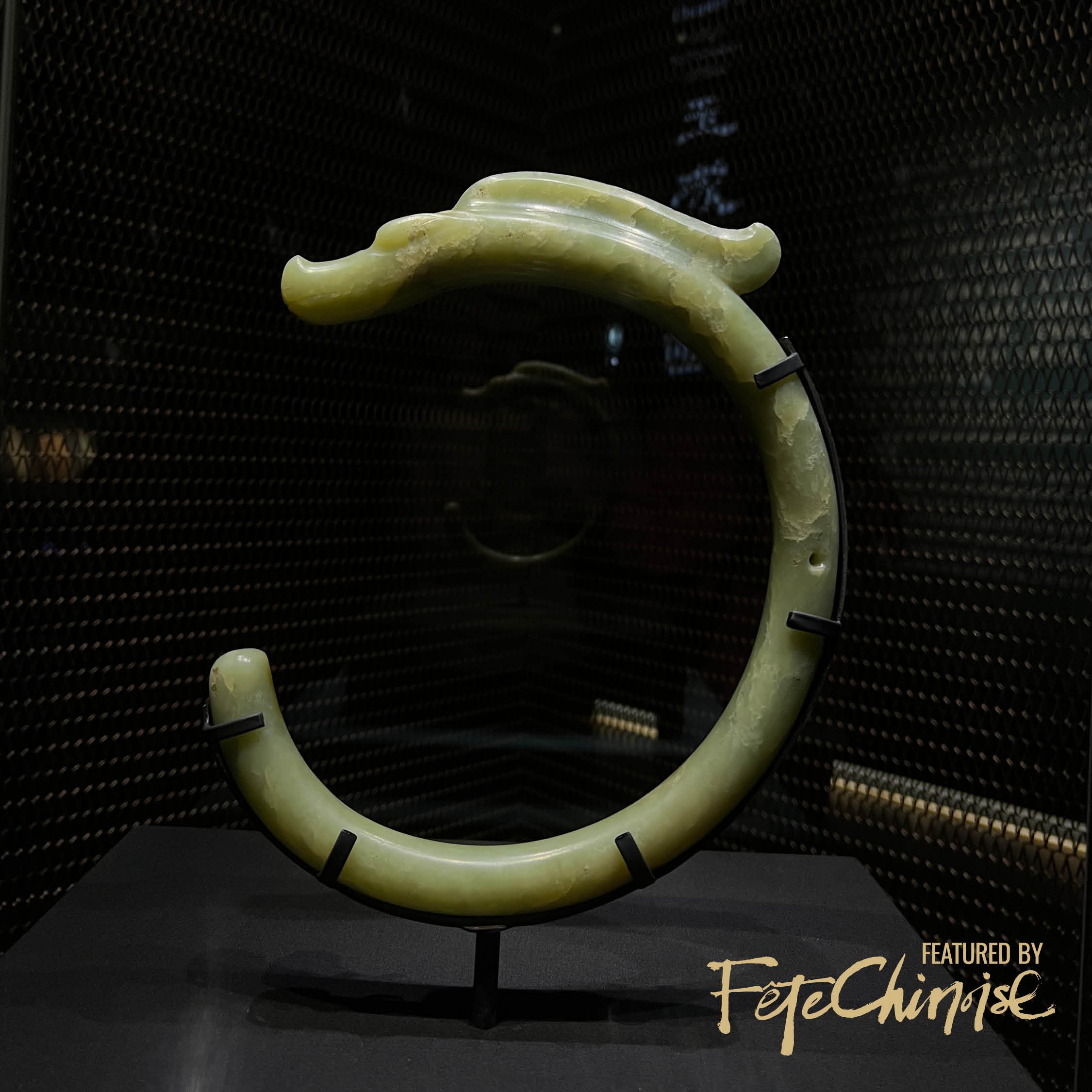










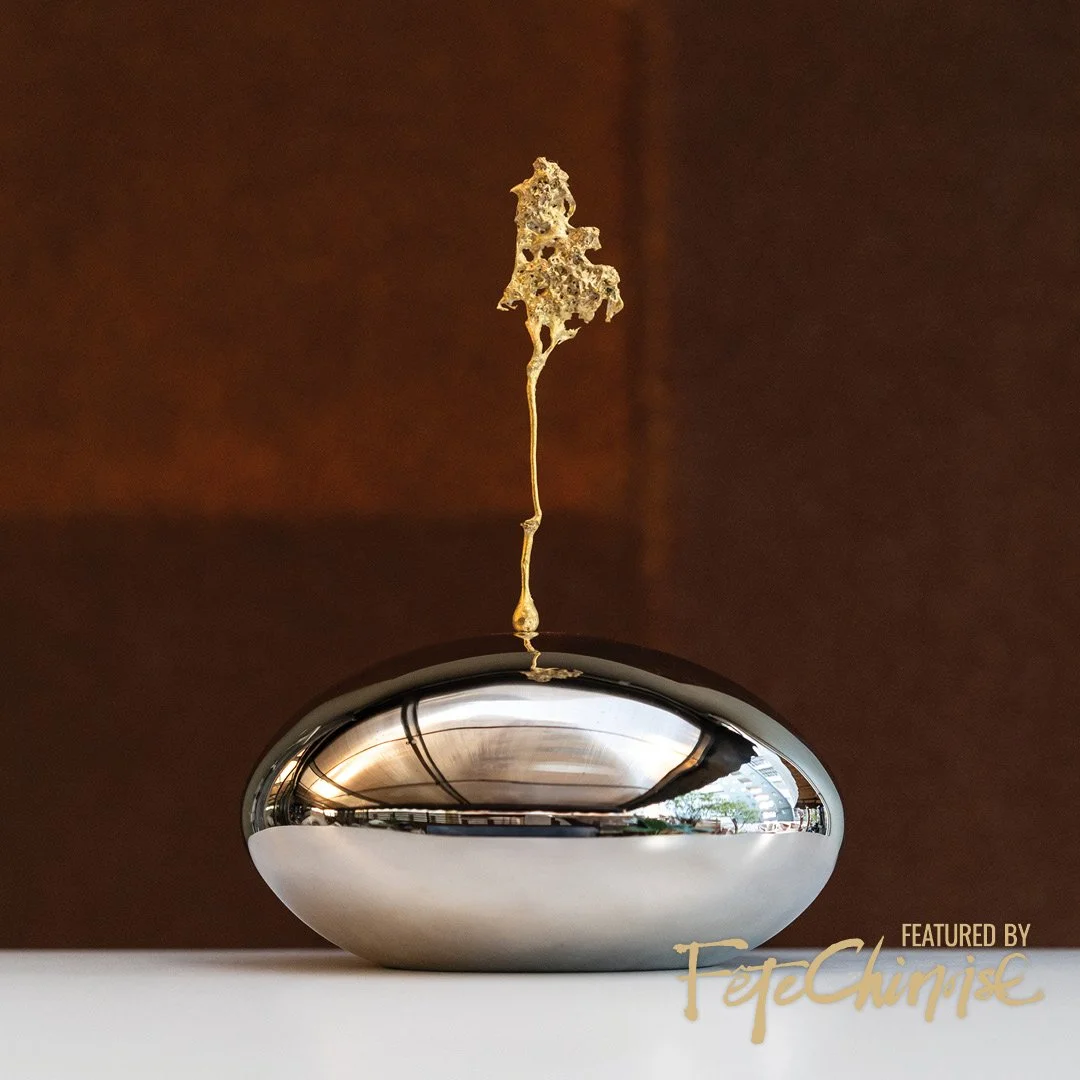
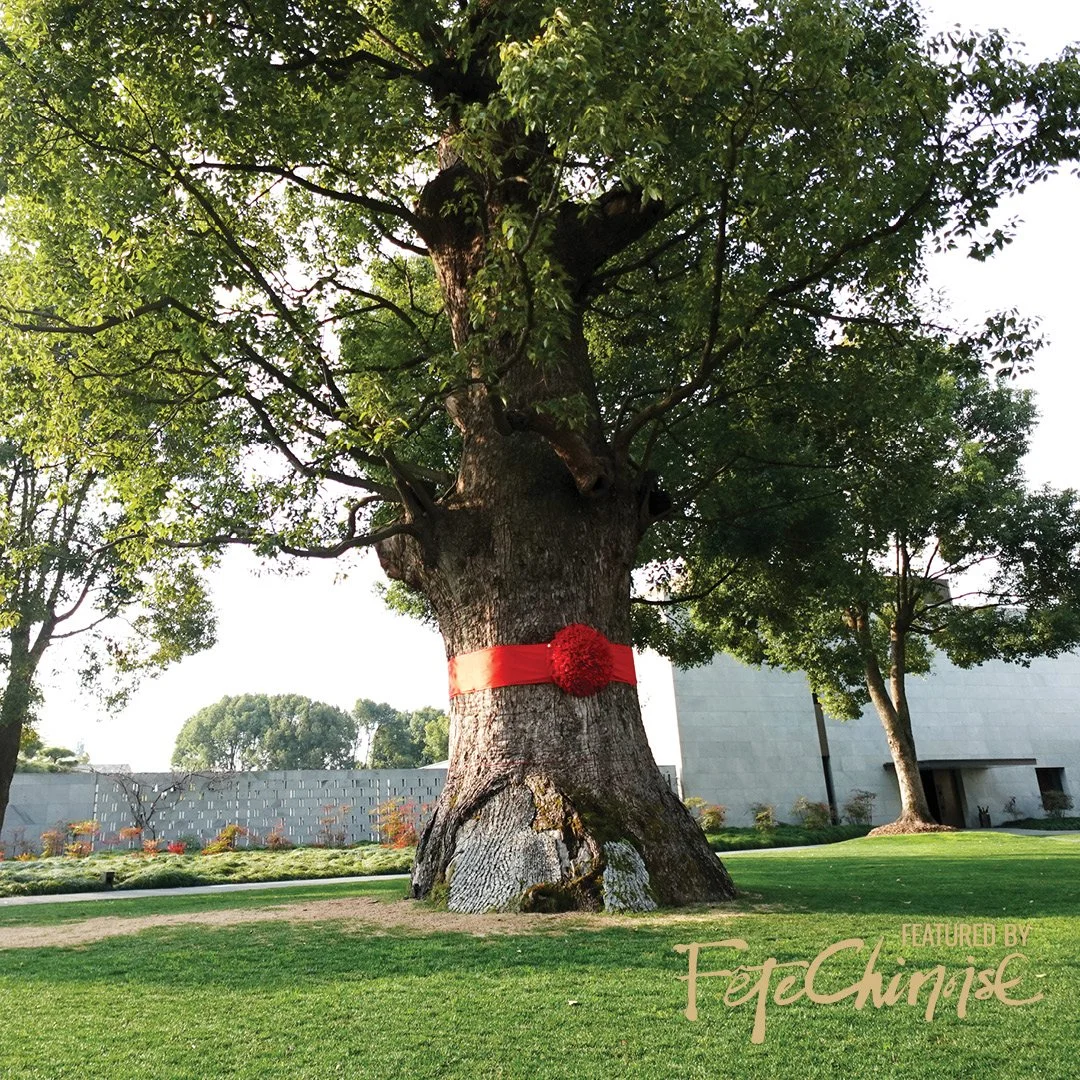


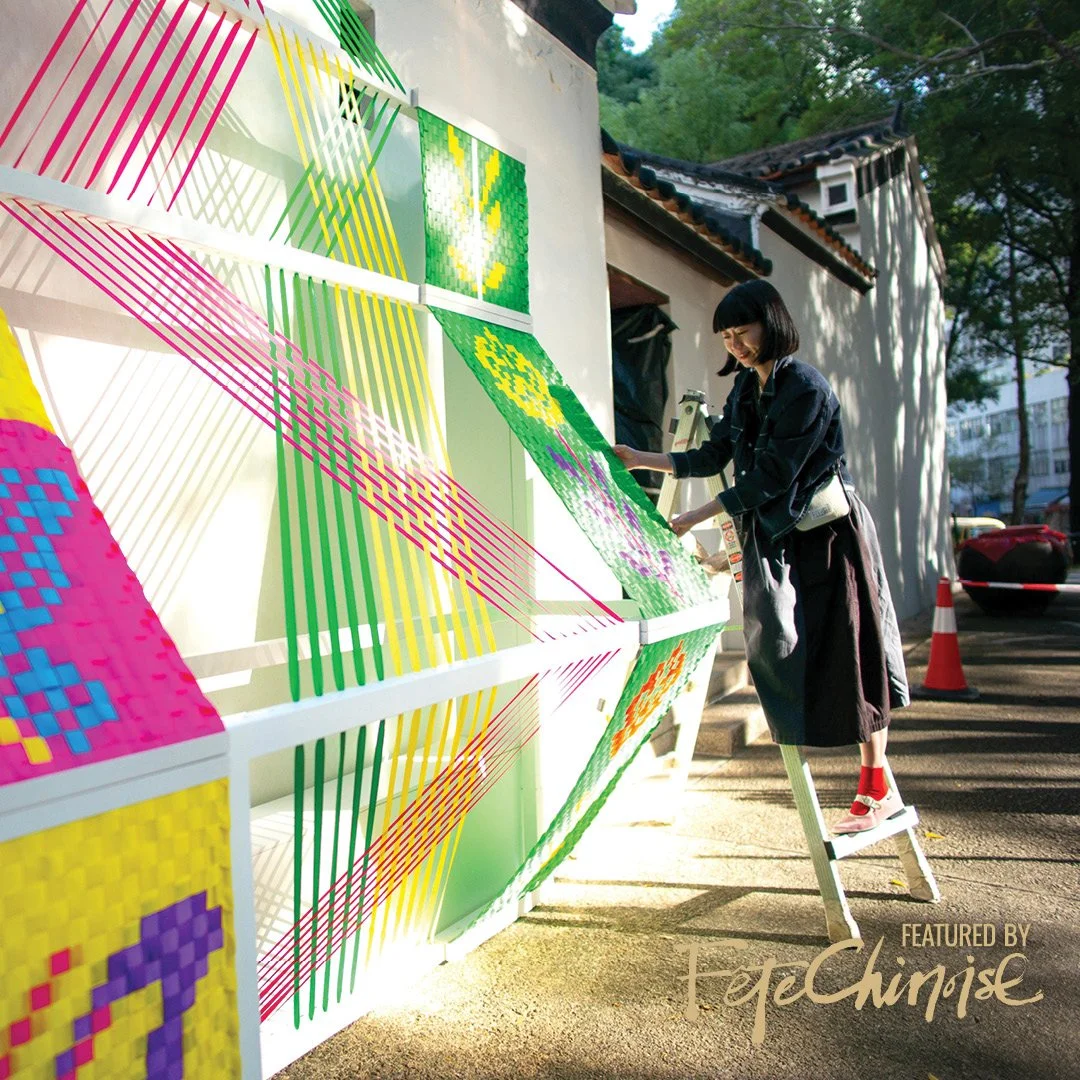




In the skilled hands of Master Hui Ka Hung, paper transforms into vibrant, lifelike creations embodying Hong Kong’s cultural heritage.
Hong Kong is a fast-paced city filled with innovation and potential. Among its towering skyscrapers are streets alive with people rushing to their next destination. Beyond the urban chaos lie alleys steeped in history and tradition. It is here that artisans preserve Hong Kong’s cultural heritage through traditional skills passed down for generations. Among them is Master Hui Ka Hung, whose workshop, Hung C Lau, has become synonymous with the art of paper craft.